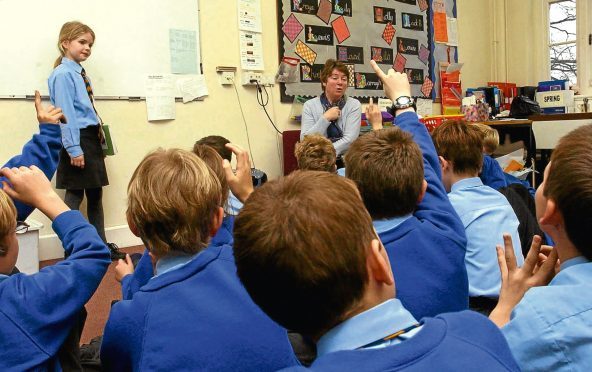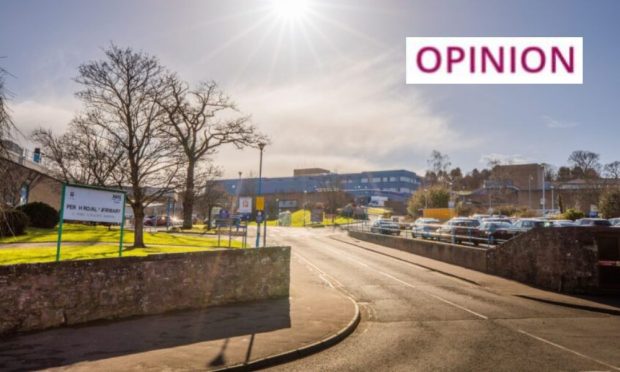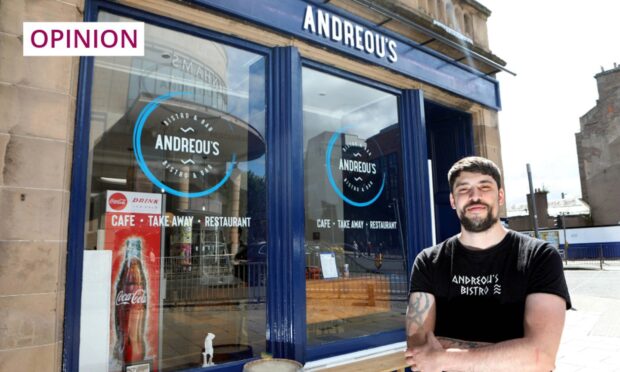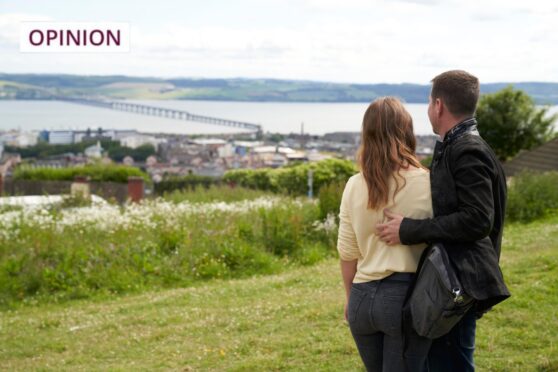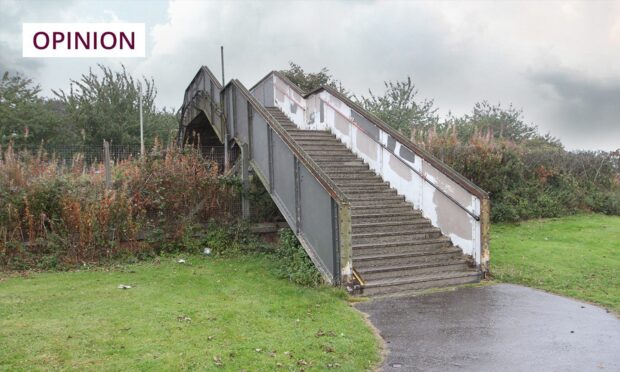Sir, – The opening line in a recent Courier article stated: ‘Schools should do more to teach children about the dangers of sharing sexual content online’.
It is an important issue but also begs the question of why our schools are constantly lumbered with the responsibility of society’s problems?
If a child climbs an electricity pylon and is electrocuted we are likely to see the headline :‘Do schools teach children about the dangers of electricity?’.
Meanwhile, if a child runs across the Kingsway, can we expect to read headlines asking if schools should teach road safety messages more often?
If children are burnt on being exposed to sunlight, doubtless we will be informed schools should be doing more to explain the benefits of UV protection to their pupils.
Similar things could be said about a range of other issues, including the likes of teenage pregnancies, drowning or drug abuse.
You name it, it will be deemed as the schools responsibility to educate people about it.
Sadly this is why standards are failing in the basics. The curriculum has become overloaded.
The teaching of many of these things could and should be covered at home.
The people who should be doing the teaching are the same people who should be taking on more responsibility for ensuring these important messages are delivered to young people – and those people are the parents.
Gerard Dignan.
17 Denhead Crescent,
Dundee.
Lack of V&A car parking
Sir, – How excited everyone is about the new museum opening in Dundee, but can anyone tell me where there is to be a car park and coach park areas for all the thousands of visitors expected to arrive?
From what I see, no provision has been made unless people are expected to walk from town, dodging traffic all the way.
The same applies to the station complex.
Fiona McMillan.
6 Ethiebeaton Terrace,
Monifieth.
Not too late for a rethink
Sir, – I read with interest the article about the controversial hotel and offices opposite the V&A (Courier, January 20).
The city development representative admitted that the council could have done more to explain their plans for the waterfront redevelopment.
However, my interest turned to sadness and concern when a picture of how it will look was released.
Is the council serious about building such a bland, dated commercial design solution as a foil directly opposite what will surely soon become a contemporary iconic museum?
This old development appears to have been pushed through despite the advent of the V&A and numerous objections.
I wonder if the powers that be have taken the trouble to consult with Kengo Kuma, the museum’s architect, to find out his views on the most appropriate type of development to best complement his exciting waterfront design statement.
Surely it is not too late to revisit this important situation.
Denis Thornton.
20 Colliston Drive,
Broughty Ferry.
Livestock plays a vital role
Sir, – I write in response to the letter extolling the virtues of a plant-based diet (letters, January 23).
Consumers’ demand for cheap food has driven production from large arable farms and confinement systems.
Introducing livestock into arable farming systems, integrated with care, can result in a more sustainable agricultural production and help regenerate soils, reducing the need for synthetic fertilizers and chemicals.
Indeed many organic farms rely on livestock within their rotation to be able to grow crops without artificial nitrogen.
Roughly 5% of Scotland can be classed as good arable land.
As a country are we wanting the rest of the land that is useable for agricultural production (mainly livestock-based in the uplands) to be unproductive as a source of food for its population and cleared of inhabitants as a result or are we wanting to go down, for example, the route of importing high protein soya from ex-rainforest South American land under, as I see it, largely unsustainable soil degrading agricultural practices?
There are grazing systems and livestock rotations out there that can help regenerate soils as well as increasing biodiversity.
The beauty of using livestock is their ability to recycle nutrients, especially carbon from plants and crop residues that we cannot eat – and this includes grass.
Red meat intakes are already below the 70g per day average recommended by the Scientific Advisory Committee on Nutrition and many meat alternatives, such as beans and pulses, do not contain the full range of proteins for optimal health and are low in zinc and iron.
We need a vibrant, healthy agricultural economy in Scotland to feed our nation and livestock production can have an important part to play in achieving this aim, without detrimental environmental consequences.
Douglas Christie.
Durie Farm,
Leven.
RBS should be told what to do
Sir, – MPs are discussing branch closures with executives of the taxpayer-owned RBS.
In exchange for the £42 billion RBS bail-out, followed by eight years of losses amounting to £60 billion, the decision as to which branches of this zombie bank should close should be taken by MPs after consultation with their constituents, and the RBS informed accordingly.
A bigger case of the tail wagging the dog has never been seen.
Malcolm Parkin.
Kinnesswood,
Kinross.
Misleading on migration
Sir, – I recently listened to the debate on BBC Radio Scotland on the matter of the First Minister’s statement that Scotland’s population demographic was so remarkably different from the rest of UK that it needed to encourage uncontrolled immigration from the EU in order to boost its indigenous population levels and prevent economic disaster.
She also opined that leaving the EU would cost the Scottish economy £12 billion, although following the usual SNP pattern, no hard facts were provided to support this assertion.
One might question why the SNP cannot make it more attractive for people in England, Wales and Northern Ireland to move to Scotland if the population requires additions from outwith the country.
Why the continuing focus on uncontrolled immigration from the EU, if not simply to yet again make the tiresome point of opposing the UK Government at every turn?
On the BBC programme, I heard an SNP spokesman making, once again, the quite erroneous claim that ‘Scotland is in the EU’.
Scotland is not in the EU. The United Kingdom is in the EU.
Such statements betray either profound ignorance or are an attempt to mislead the Scottish people.
Holyrood – struggling with failures in education, policing and the NHS – is a glasshouse.
The First Minister should desist, therefore, from throwing verbal stones.
If our population is so under-skilled or workshy that businesses in Scotland need to bring in European labour there is no reason whatever that we cannot revert to the system pre-1974 that everyone seeking to work in the UK needed to have a work-permit together with prospective employer reasons as to why the employer cannot recruit locally.
This system is used extensively in many parts of the world, but is apparently ignored by the SNP in favour of political grandstanding.
Derek Farmer.
Knightsward Farm,
Anstruther.
Grit bins not used properly
Sir, – I refer to Craig Smith’s article about Fife grit bins in the Monday Matters column.
We live at the top of a road known locally as the ‘devil’s elbow’ and used to have two grit bins on the side of the verge.
They were regularly full of rubbish.
If some people cannot use the facilities for the purpose for which they are intended, they shouldn’t complain when the council decides to remove them.
Sylvia McHardy.
Endrigs,
Kilmany.
